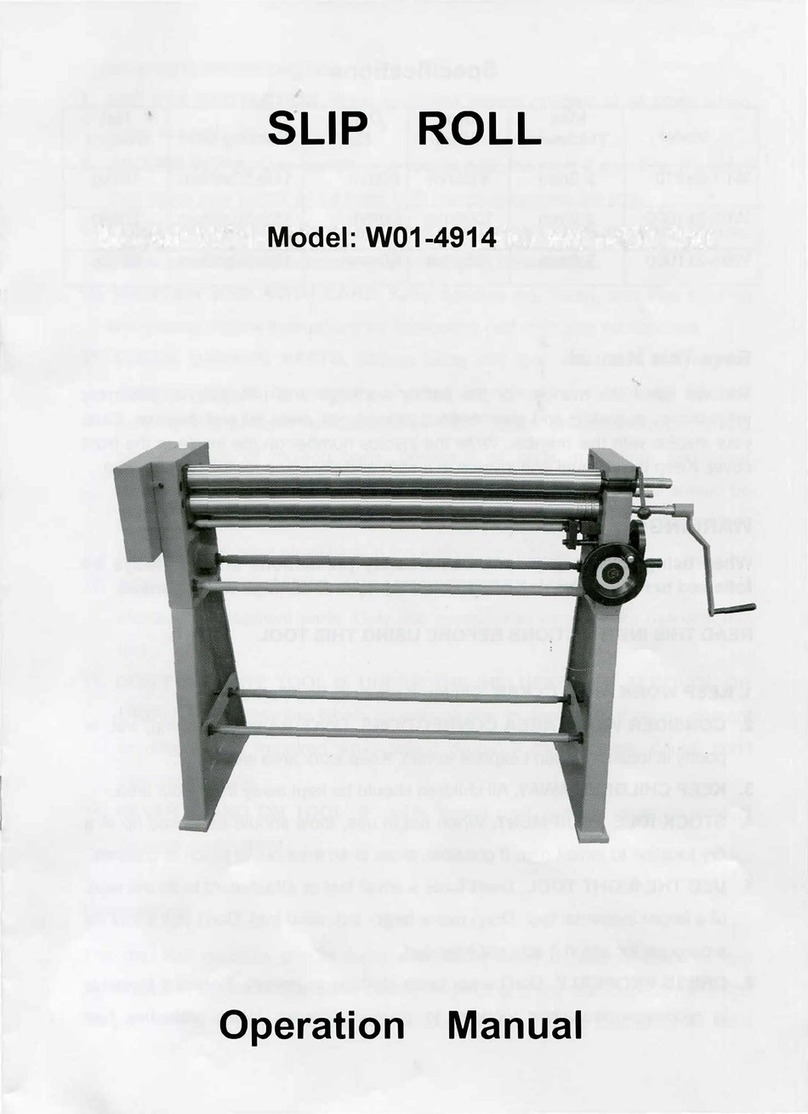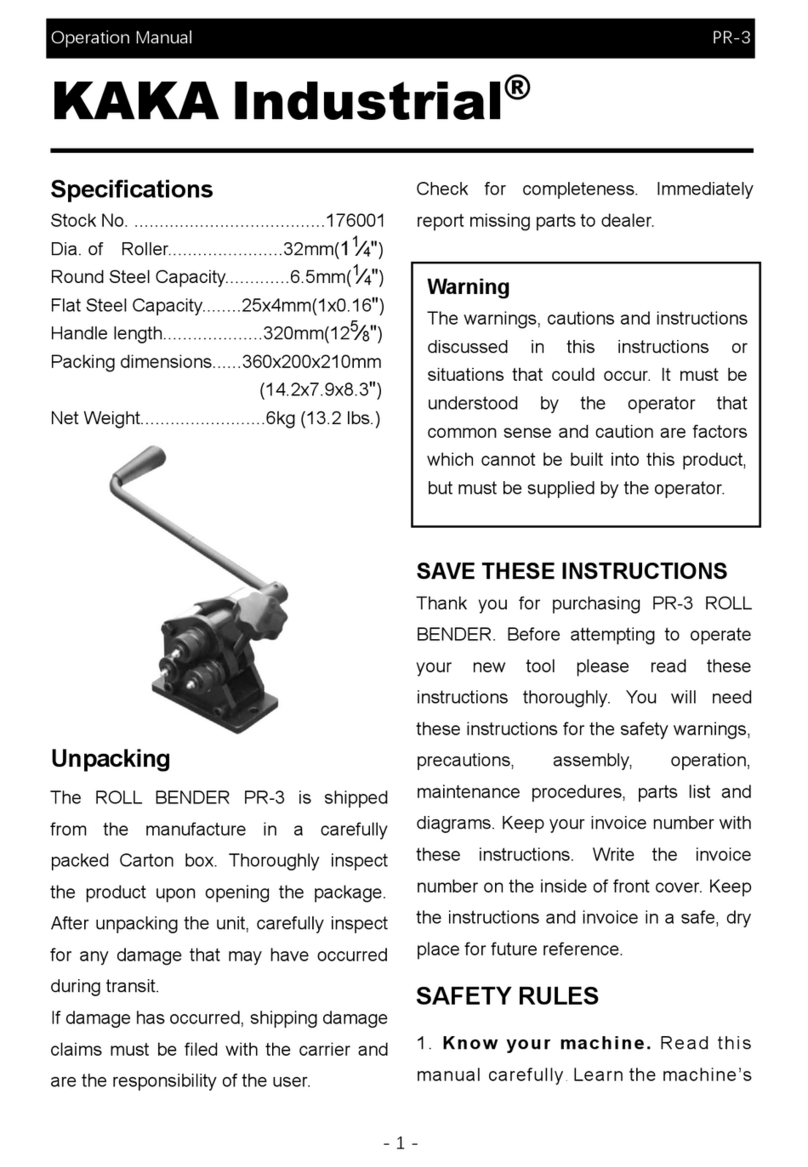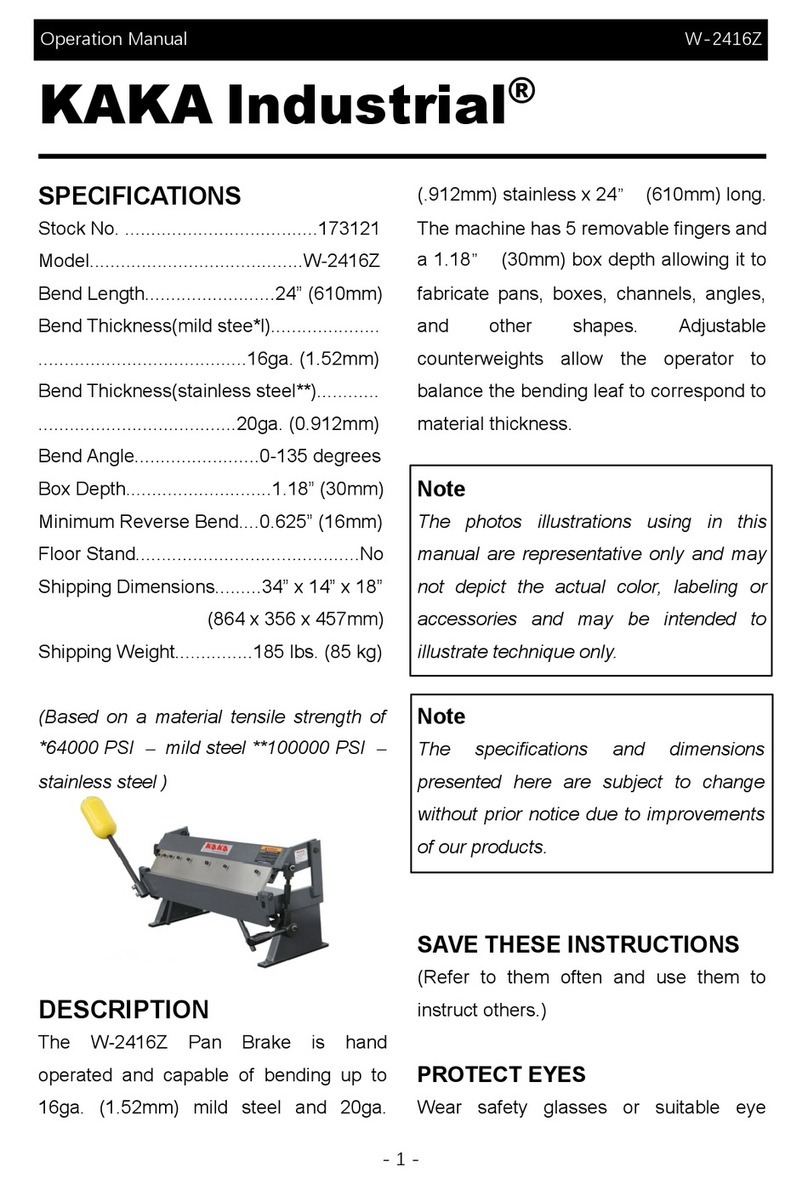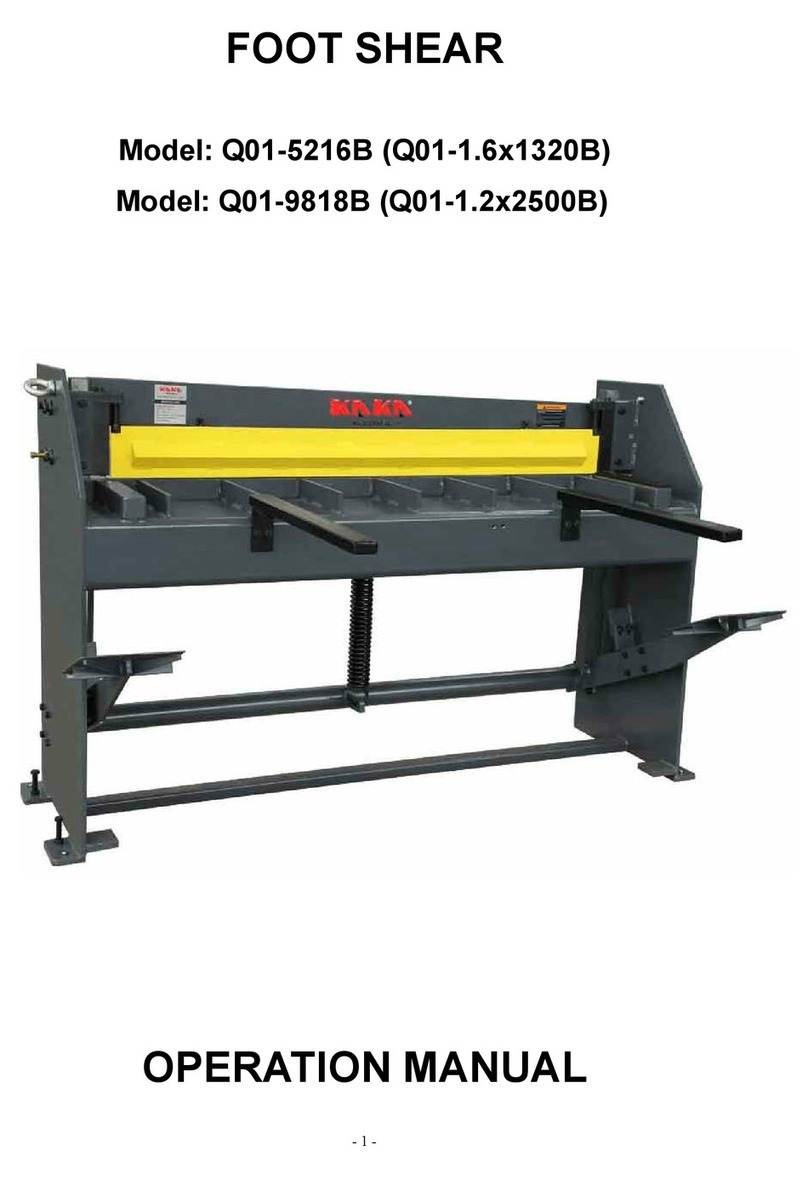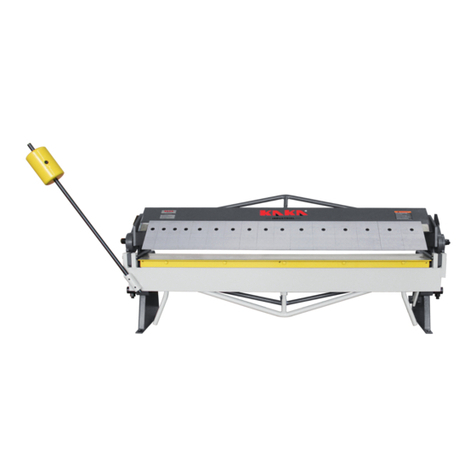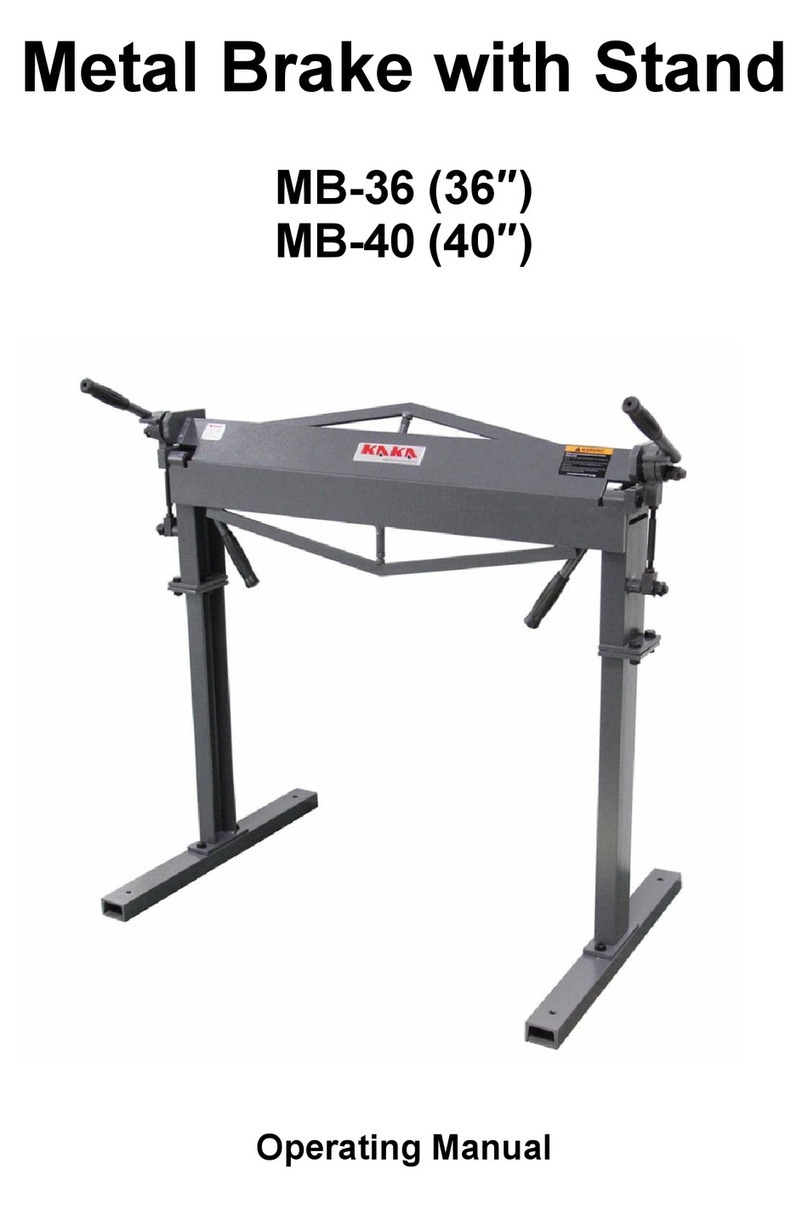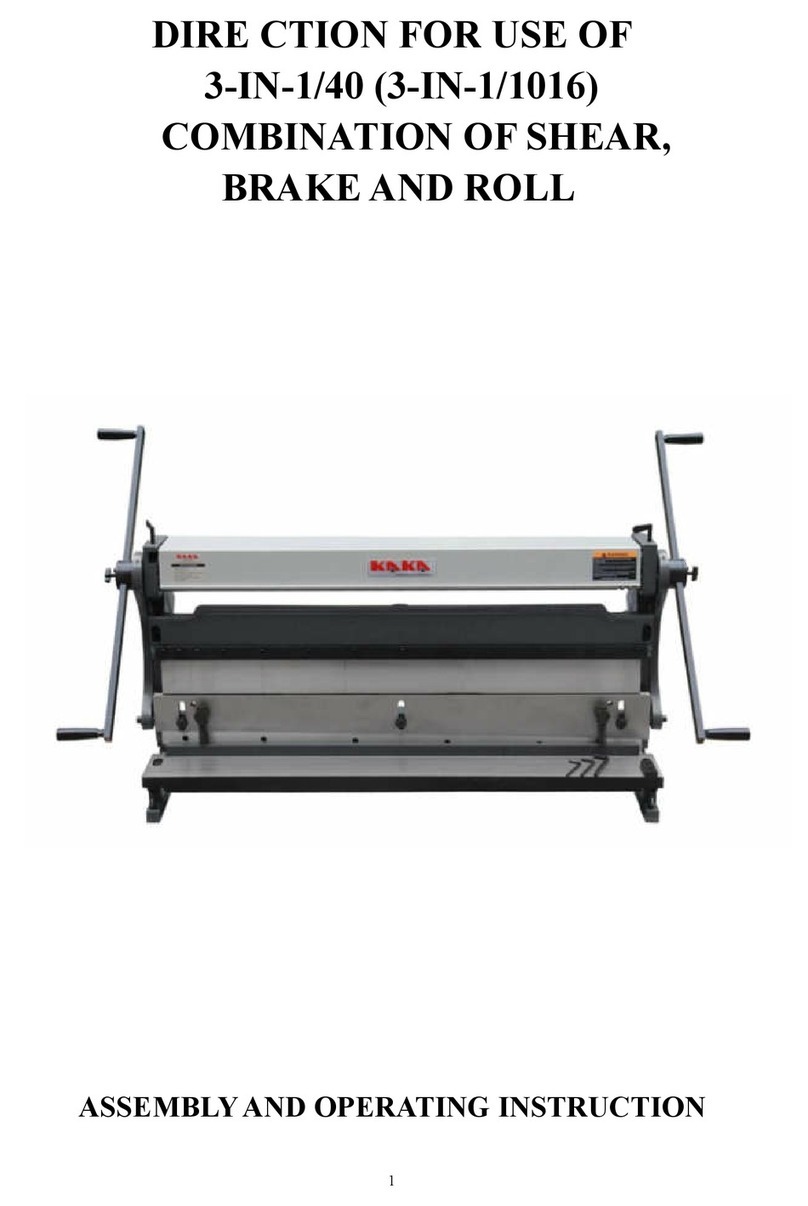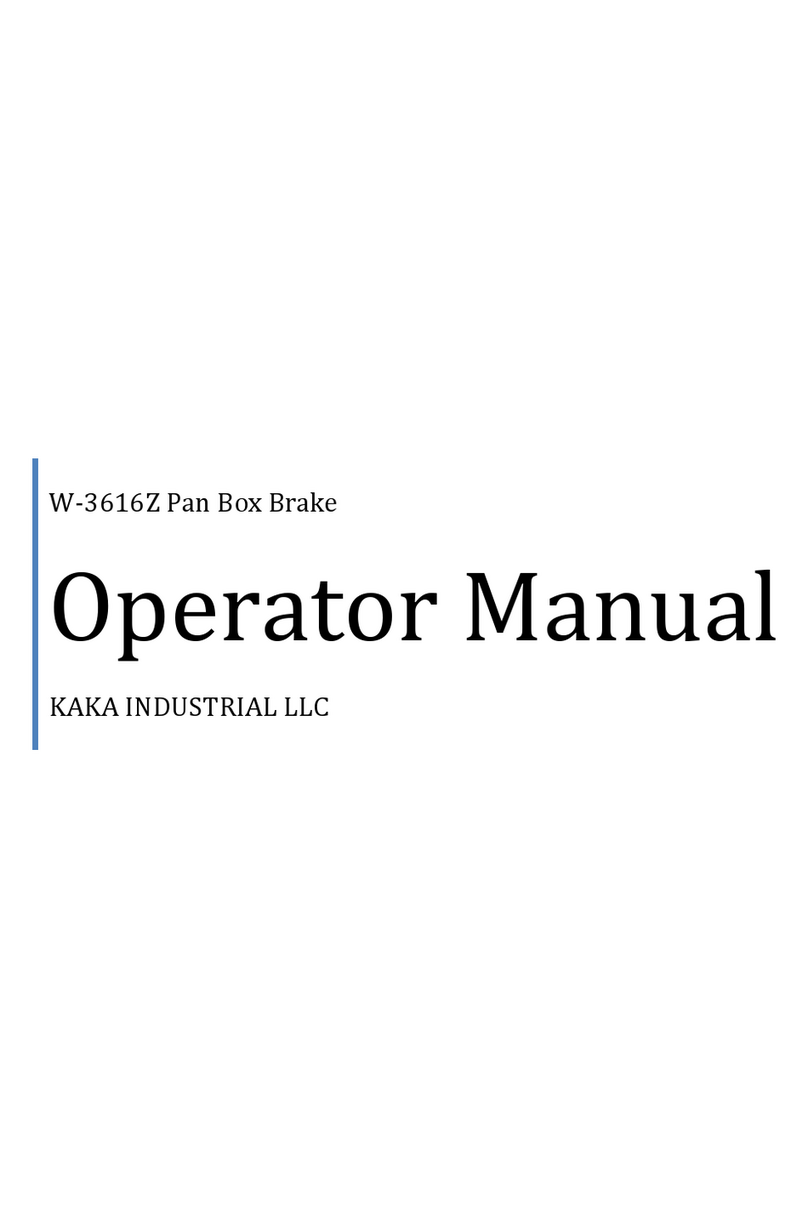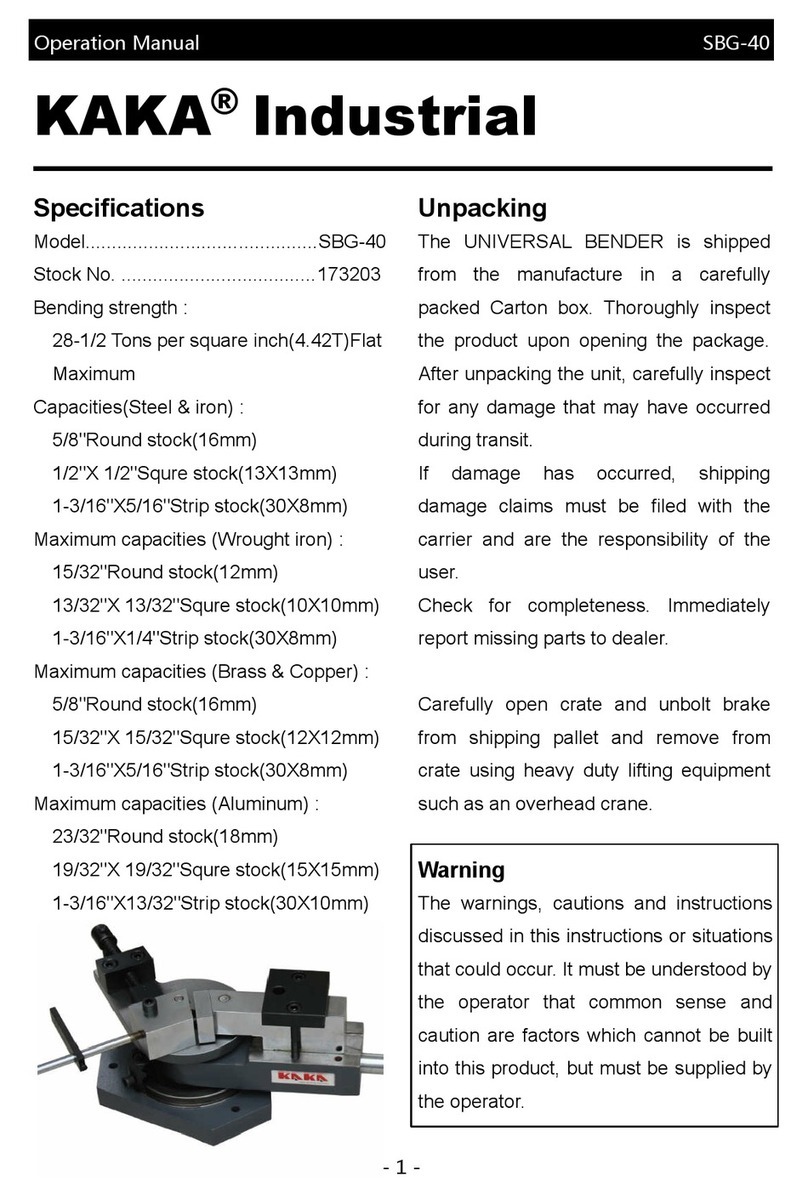
— 2 —
Operation Manual W-4816Z
Model W-4816Z
intended. DO NOT use inappropriate
attachments in an attempt to exceed
the machines rated capacity.
3.Overloading machine. By
overloading the machine you may
cause injury from flying parts. DO
NOT exceed the specified machine
capacities.
4. Machine usage. DO NOT use the
brake as a press or crushing tool.
5. Dressing material edges. Before
bending sheet metal, always chamfer
and deburr all sharp edges.
6.Blade adjustments and
maintenance. Always keep blades
sharp and properly adjusted for
optimum performance.
7.Check for damaged parts. Before
using any tool or machine, carefully
check any part that appears damaged.
Check for alignment and binding of
moving parts that may affect proper
machine operation.
WARNING
The warnings, cautions, and
instructions discussed in this
instruction manual cannot cover all
possible conditions or situations that
could occur. It must be understood
by the operator that common sense
and caution are factors which
cannot be built into this product, but
must be supplied by the operator.
2. Wear protective hair covering to
contain long hair.
3. Wear safety shoes with non-slip
soles.
4. Wear safety glasses. Everyday
glasses have only impact resistant
lenses. They are NOT safety glasses.
5. Be alert and think clearly. Never
operate tools when tired, intoxicated
or when taking medications that
cause drowsiness.
6. Keep work area clean. Cluttered
work areas invite accidents.
7. Work area should be properly lit.
8. Keep visitors at a safe distance
from work area.
9. Keep children out of workplace.
Make workshop childproof. Use
padlocks to prevent any unintentional
use of tools.
10.
Assemble only according to these
instructions.
Improper assembly can
create hazards.
11.When tools are not in use, store
them in a dry, secure place out of the
reach of children. Inspect the tools
prior to storage and before reuse.
12. Maintain product labels and
nameplates. These carry important
safety information.
KNOW HOW TO USE TOOL
1.Use the right tool for the job. DO
NOT attempt to force a small tool or
attachment to do the work of a large
industrial tool. DO NOT use a tool
for a purpose for which it was not
intended.
2.Do not force tool. Your machine will
do a better and safer job if used as
